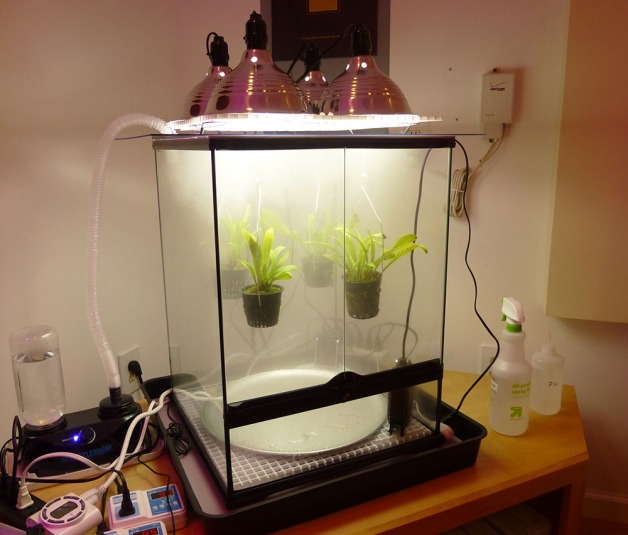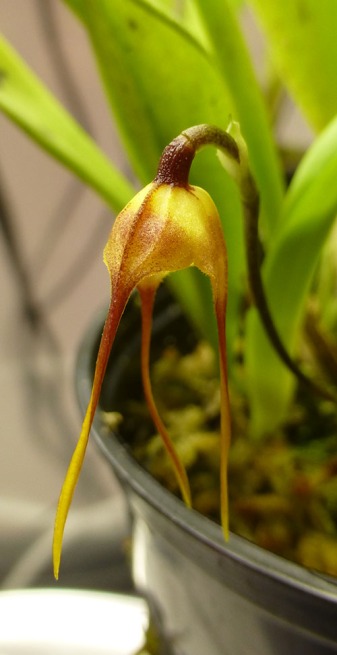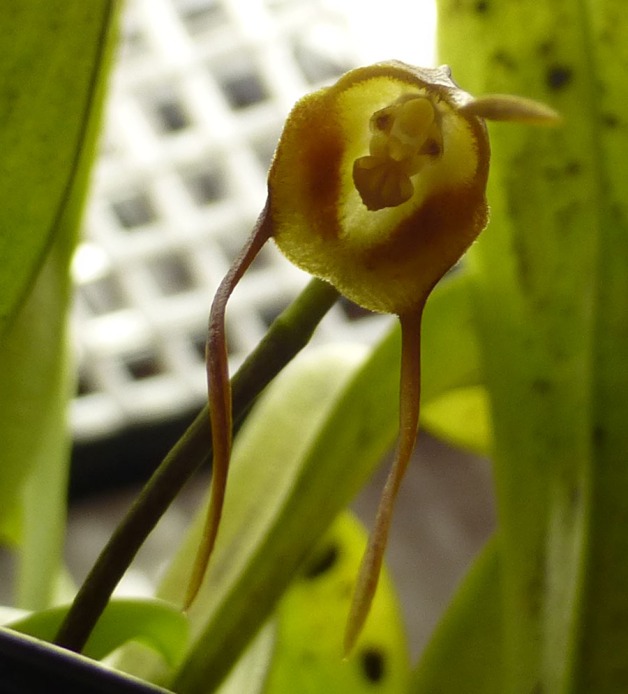
My own little high-altitude, South American cloud forest.
I’ve been casually growing orchids for a few years now, but things got more serious in October when I decided to take on Dracula orchids (often called “monkey-face orchids” because many of the blooms resemble little faces). Draculas are not “windowsill” orchids because they have very specific environmental requirements. Most grow in high-altitude, South American cloud forests which means they need:

My first Dracula orchid bloom.
- Extremely high relative humidity (at least 90%).
- Warm temperatures during the day (in the 70s or 80s), and cold temperatures at night (in the 50s).
- “Full shade” which means a fair amount of light (1,000 – 1,5000 foot-candles), but not direct sunlight.
If those weren’t challenging enough conditions, half my collection blooms from below rather than above which means they need to be potted in baskets and suspended rather than arranged on a shelf. In other words, these are some of the most difficult orchids to grow in completely artificial, indoor conditions. (I actually have a couple of orchids that are proving even more difficult, but I’ll save those for another post).
Once I feel I have the process of growing Dracula orchids in a terrarium perfected, I’ll write a detailed article accompanied by a video. But for now, I want to report that I am having some very solid success. Not only am I seeing new growth with all my Dracula orchids, but my Dracula olmosii just bloomed. I’m particularly proud of the olmosii because it was nearly dead when I got it, having spent several months in a greenhouse that was far too hot.
I think it’s really interesting that the orchid that was in the worst condition when I got it was also the first to bloom.

Peek inside the bloom of a Dracula olmosii orchid and you’ll find a little face peeking back out at you.